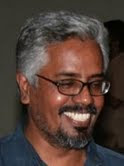Producer of a Film Era in Malayalam

SHOBHANA PARAMESWARAN NAIR
“Our cinema should not be like what it is now. The characters should speak like the way we speak and eat the way we eat. And they should wear the same clothes as we do” said Shobhana Parameswaran Nair in an interview about how they made Neelakuyil (1955). Along with other pioneers of the time like Ramu Kariat, P Bhaskaran, A Vincent and KS Sethumadhavan, Vayalar and Devarajan, TK Pareekutty, Sathyan and Kumari, he was one of those persons who was instrumental in giving Malayalam cinema a body and soul of its own.
The departure of Shobhana Parameswaran Nair marks the end of an era in Malayalam cinema, one that was marked by camaraderie and cooperation, one in which a fledgling industry was freeing itself from its several dependencies, and finding its own form and voice. But for a producer and visionary like Parameswaran Nair, Malayalam cinema would have been poorer by several towering legends.
In Cinemayude Kalpadukal, M R Rajan’s 3-hour long documentary on Shobhana Parameswaran Nair, the latter reminisces that it was after watching B N Reddy’s film Devata (1941), that he fell in love with the medium. Devata was a landmark film in the history of south Indian cinema that attempted to break away from the loud theatricality of the times and to find an ‘indigenous’ idiom. The period in which Shobhana Parameswaran Nair entered film production (early 60’s) was also one when Malayalam cinema was breaking away from the claustrophobic studio sets and melodramatic modes to rediscover itself in local soil and idioms. The period witnessed a spate of films that were realistic in approach and progressive in their concerns.
Shobhana Parameswaran Nair, a still photographer by profession, represents that fraternity that ushered in radical change in Malayalam cinema, and it included actors and actresses, scenarists and lyricists, producers, technicians and musicians. He associated with some of the best works of the period like Neelakuyil, Bhargavinilayam and Rarichan Enna Pouran before becoming a producer. Though he produced only a handful of films – the most significant of them between 1963 and 1978 – he represents the spirit of his times in various ways. Through these films he led the way to virtually transplant Malayalam cinema to Kerala, both physically and thematically. It was not just the discovery of locations like the surroundings of Bharathapuzha, but was also through symbiotically linking cinema with our literary, imaging and musical traditions. Suddenly, our cinema began to vibe with our longings and belongings.
An ardent reader, he was close to many creative writers of the period like Vaikom Muhamed Basheer, M T Vasudevan Nair etc with whom he had lifelong association. It was he who persuaded the latter to write film script – Murappennu in 1965 which was his first, and then Nagarame Nandi in 1967, thus virtually inaugurating a new age in Malayalam cinema. The film scripts of established writers like MT and Uroob, firmly placed cinema in contemporary space, time and culture. In their commitment to realism and reality, they rediscovered and literally re-located Malayalam cinema in local spaces, communities and locales. For instance, Bharathapuzha and its surroundings, and Valluvanadan slang which became the norm in Malayalam cinema in the decades to come, were identified and celebrated first by MT Vasudevan Nair scripts; regional slang, milieu and ways of life, folk music and rustic comedy thus became part of cinema. If till then, Malayalam cinema industry as well as its themes and even storylines and musical scores were drawn from Tamil and Hindi, this period saw a new self-awareness and consciousness about one’s own tradition and surroundings. And Parameswaran Nair was in the forefront of that transition, catalyzing and facilitating it.
His films are landmarks of Malayalam film industry and they map the emotional and thematic concerns of the period. For each film, Shobhana Parameswaran Nair chose different writers and directors. For his debut film Ninamaninja Kalpadukal he chose a novel by Parapurath. It was directed by N N Pisharoty and won Silver medal at the national level. If his next two films were written by MT Vasudevan Nair, he chose the story of Perumbadavan Sreedharan for Abhayam, which was a film about a female writer, and was directed by Ramu Kariat. For this film, he used a bunch of original poems by legendary writers like Vallathol, Changampuzha, Sugathakumari, G Sankara Kurup etc. His next film Kallichellamma was based on a G Vivekanandan novel and was directed by P Bhaskaran, and Ammuvinte Attinkutty, children’s film by Ramu Kariat was based on a story by DK Pottekat. Apart from their deep sense of milieu and emotional intensity, his films will also be remembered for unforgettable songs of haunting quality and charm.
What makes Parameswaran Nair different from other producers – even of that period – was his ability to play the role of a catalyst to the whole process of filmmaking. For him filmmaking was not just about finance and profits, because his capital was not money but passion, and he wanted to make films that were really contemporary and timeless. As a producer, his involvement and commitment was total in all departments of the art. Whether it be the identification of the story, choice of actors (artists like Madhu, Jyotilakshmi etc played their first major roles in his films), scenarists, lyricists or directors (Ninamaninja Kalpadukal was N N Pisharoty’s debut film), Parameswaran Nair followed his own tastes and hunches, most of which proved to be trendsetters later. And it was a period when filmmaking was a celebration of friendship and creativity. It was this quality that endeared ‘Paramu Annan’ to filmmakers and films lovers of his generation and of the future.
Labels: malayalam cinema


0 Comments:
Post a Comment
Subscribe to Post Comments [Atom]
<< Home